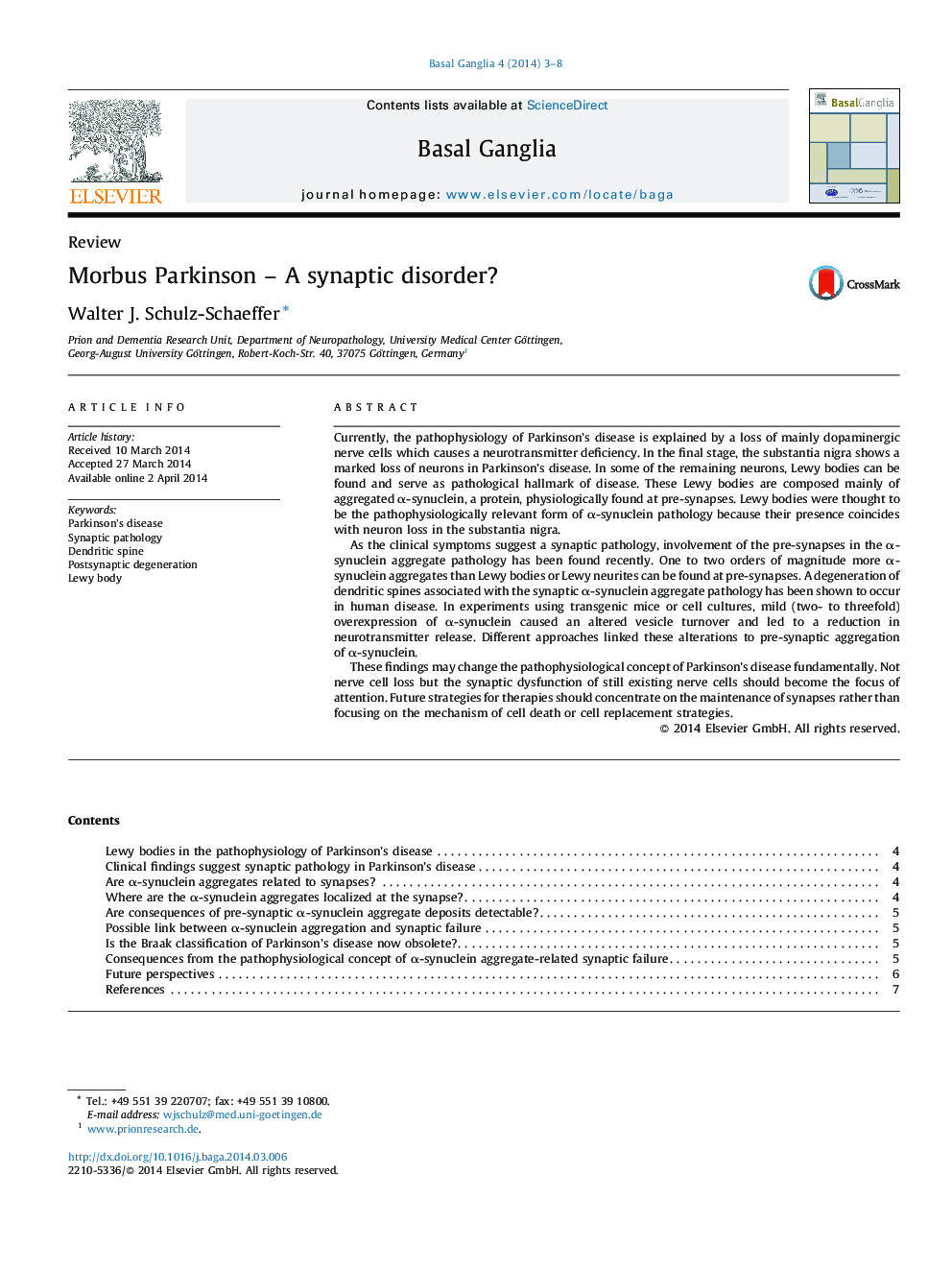| Article ID | Journal | Published Year | Pages | File Type |
|---|---|---|---|---|
| 3036051 | Basal Ganglia | 2014 | 6 Pages |
Currently, the pathophysiology of Parkinson's disease is explained by a loss of mainly dopaminergic nerve cells which causes a neurotransmitter deficiency. In the final stage, the substantia nigra shows a marked loss of neurons in Parkinson's disease. In some of the remaining neurons, Lewy bodies can be found and serve as pathological hallmark of disease. These Lewy bodies are composed mainly of aggregated α-synuclein, a protein, physiologically found at pre-synapses. Lewy bodies were thought to be the pathophysiologically relevant form of α-synuclein pathology because their presence coincides with neuron loss in the substantia nigra.As the clinical symptoms suggest a synaptic pathology, involvement of the pre-synapses in the α-synuclein aggregate pathology has been found recently. One to two orders of magnitude more α-synuclein aggregates than Lewy bodies or Lewy neurites can be found at pre-synapses. A degeneration of dendritic spines associated with the synaptic α-synuclein aggregate pathology has been shown to occur in human disease. In experiments using transgenic mice or cell cultures, mild (two- to threefold) overexpression of α-synuclein caused an altered vesicle turnover and led to a reduction in neurotransmitter release. Different approaches linked these alterations to pre-synaptic aggregation of α-synuclein.These findings may change the pathophysiological concept of Parkinson's disease fundamentally. Not nerve cell loss but the synaptic dysfunction of still existing nerve cells should become the focus of attention. Future strategies for therapies should concentrate on the maintenance of synapses rather than focusing on the mechanism of cell death or cell replacement strategies.
